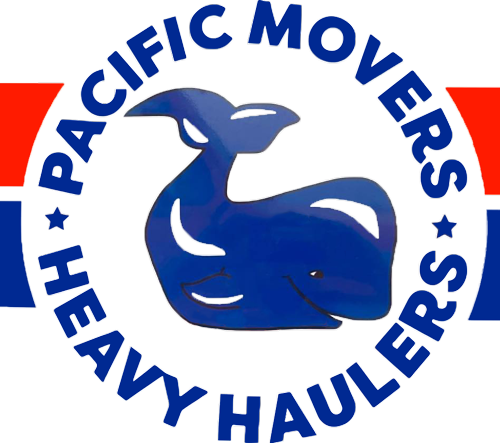
Structural moving is no small feat—it’s a fascinating blend of engineering, problem-solving, and logistical expertise. The idea of relocating an entire building might seem daunting to many, but for structural moving contractors, it’s just another day at work. These professionals specialize in lifting, transporting, and setting down structures of all shapes and sizes, from historic homes to industrial facilities. But what does a typical day look like for these contractors? Let’s dive behind the scenes to explore the intricacies of their work.
The Morning Briefing: Planning and Preparation
Every successful structural move begins long before anyone sets foot on the job site. The day typically starts with a morning briefing at the company’s headquarters or on-site. Here, the project manager, engineers, and crew discuss the plan for the day in detail.
The discussion includes reviewing blueprints, assessing the structure’s weight and dimensions, and analyzing the terrain of the moving path. Structural moving contractors must also account for weather conditions, traffic patterns, and other external factors that could impact the move.
Precision is key. If the plan isn’t perfect, the risks of damaging the building—or worse—are too high to ignore. The team uses cutting-edge technology, including 3D modeling software, to create detailed simulations of the move. This step ensures every potential challenge is accounted for and mitigated.
Preparation Highlights:
- Reviewing structural assessments and engineering reports.
- Mapping out the route to avoid obstacles like low-hanging wires or tight corners.
- Assigning roles and responsibilities to team members to streamline operations.
On-Site Operations: Lifting and Moving Structures
Once the morning briefing is complete, the team heads to the site to begin the real work. The first step is lifting the structure off its foundation. This process involves setting up a grid of steel beams underneath the building to distribute its weight evenly. Hydraulic jacks are then positioned to lift the structure slowly and steadily.
This phase is where the expertise of structural moving contractors truly shines. The precision required to lift a building without causing structural damage is immense. Contractors often describe this step as “controlled chaos”—every movement must be deliberate, and even the smallest miscalculation can have significant consequences.
After the structure is lifted, it is secured onto a specialized trailer or dolly system for transportation. Depending on the building’s size and weight, contractors may use multi-axle hydraulic dollies, which can pivot independently to navigate tight spaces.
Key Activities During Lifting and Moving:
- Ensuring the steel beams are positioned correctly to support the building.
- Monitoring hydraulic systems to maintain balance during the lift.
- Advanced tracking systems are used to guide the structure safely along the route.
Implementing Safety Measures and Equipment Setup
Safety is paramount in structural moving. Contractors follow rigorous safety protocols to protect both their team and the structure being moved. Setting up safety barriers, securing the work area, and conducting equipment inspections are all part of the daily routine.
Before the move begins, the crew double-checks every piece of equipment, from hydraulic jacks to steel beams, to ensure they are in optimal working condition. This step minimizes the risk of equipment failure, which could halt operations or cause accidents.
Structural moving contractors are also trained in emergency response procedures. They are prepared to handle unexpected situations, such as equipment malfunctions or changes in weather, to ensure the project stays on track.
Safety Measures Include:
- Inspecting equipment for wear and tear.
- Installing temporary supports to stabilize the structure during the move.
- Communicating constantly via radios or hand signals to coordinate actions.
Coordinating with Utility Companies and Local Authorities
Moving a structure often involves more than just the building—it also requires coordination with various external entities. Utility companies, for example, may need to temporarily disconnect power lines or reroute gas lines to clear the path. Local authorities might issue permits or provide escorts for road closures during the move.
This coordination can be one of the most complex aspects of a structural moving project. Contractors must work closely with these stakeholders to ensure minimal disruption to the surrounding community. For instance, moving a historic home through a busy downtown area might require weeks of planning with city officials to manage traffic and safety concerns.
Typical Coordination Tasks:
- Obtaining permits for oversized loads and road closures.
- Communicating with utility companies to adjust overhead wires or underground pipes.
- Scheduling police escorts or traffic control measures for public safety.
Problem-Solving on the Go: Overcoming Unexpected Challenges
Despite meticulous planning, no structural move is ever without surprises. Unexpected challenges are part of the job, and structural moving contractors must be quick on their feet to address them. These challenges can range from equipment malfunctions to unforeseen obstacles along the route.
One of the most critical skills in this line of work is adaptability. Contractors rely on their experience and creativity to devise solutions in real time. For example, if the hydraulic jacks lose pressure during a lift, the team may need to stabilize the structure manually while repairing the equipment. Similarly, if the planned route becomes inaccessible due to construction, contractors must find an alternate path without jeopardizing the project’s timeline.
Common Challenges and Solutions:
- Challenge: Uneven terrain causing instability.
Solution: Adding temporary supports or using shims to level the structure.
- Challenge: Sudden weather changes.
Solution: Pausing the move and securing the structure until conditions improve.
- Challenge: Equipment failure.
Solution: Deploying backup systems or swapping out faulty components.
The Final Step: Securing the Structure at Its New Location
Once the building reaches its destination, the process of setting it down begins. This step is just as delicate as the lifting phase. Contractors carefully position the structure over its new foundation and lower it using hydraulic systems. Once it’s in place, the team secures it to ensure stability.
Afterward, the crew performs a thorough inspection to confirm the building has been safely relocated. They check for any signs of structural damage and make necessary adjustments to the foundation or support beams.
Why Choose Experienced Structural Moving Contractors?
The work of structural moving contractors is as much an art as it is a science. These professionals combine technical expertise, problem-solving skills, and a deep understanding of engineering principles to execute projects that many would consider impossible.
If you’re considering a structural move, partnering with experienced contractors is essential. Whether you’re relocating a historic home, a commercial building, or an industrial facility, the right team can make all the difference in ensuring a successful project.
Let Associated Pacific Movers, Inc. Help You!
At Associated Pacific Movers, Inc., we specialize in providing reliable and professional structural moving services in Boise, ID, and throughout the state. With decades of experience and a commitment to excellence, we have the skills and equipment to handle even the most complex projects.
Ready to start your structural moving journey? Contact us today for a consultation. Let us turn your moving challenges into a seamless success!
